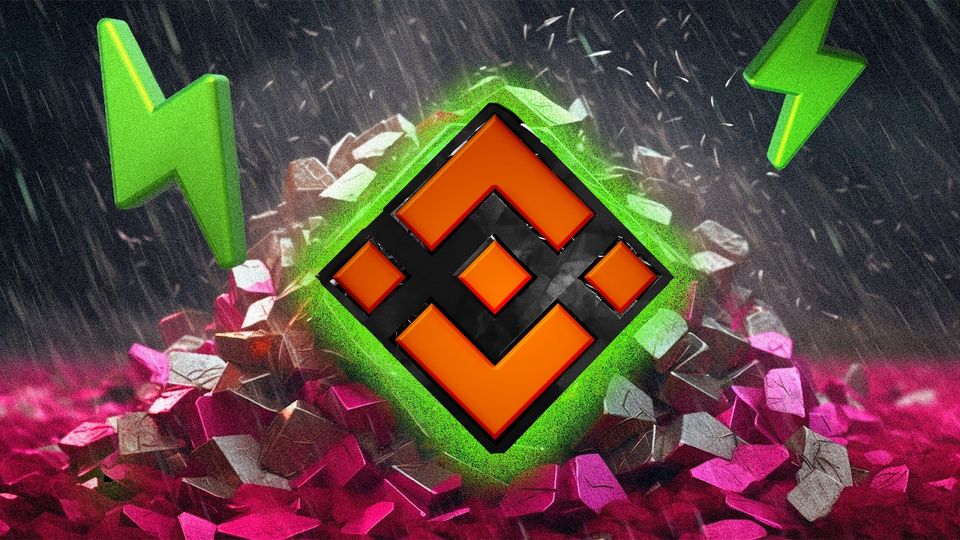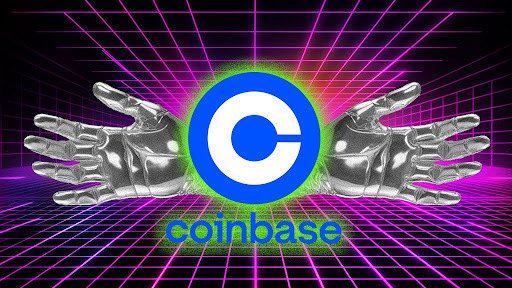
Amid the ongoing criminal trial of Sam Bankman-Fried, current news reports remain fixated on the past events which caused the downfall of his FTX crypto exchange.
Although perfectly understandable (as we ourselves are doing the same) we also believe that it’s important to re-observe the current state of crypto affairs - or more specifically, the current state of centralised exchange (CEX) affairs. In doing so, there’s a chance to determine whether or not another multi-billion dollar crypto collapse is on the horizon.
To do so, this article will discuss the DeFi health of the top four CEXs on the market (by trade volume and reputation ranks that is). These include Coinbase, OKX, ByBit, and Binance.
Preliminary Points to Consider
In short, if you’re relying on a third party (i.e. a CEX) to hold your crypto funds, you can simply never be 100% sure that they’re 100% safe and secure.
That being said, there are metrics that you can analyse in order to get a reading on the solvency state of a CEX, with the most proficient being ‘proof of reserves’ (PoR).
PoR is a method of cryptographically verifying that exchanges are backing the coins it claims to hold on behalf of users. In other words, PoR display a platform’s ‘liabilities versus assets ratio’- which as you should know, should be at least 1:1.
As was the case with FTX, exchanges with larger liabilities than assets are running on fractional reserves…something you don’t want to see when it comes to choosing a CEX. Further, this is one of the reasons why FTX didn’t produce PoR audits on a frequent basis, as if it did, the platform’s myriad of frailties would’ve been exposed for all to see.
However, in adding a heap of ambiguity into the equation, the way in which liabilities are calculated (and even reported) can also vary, as crypto audits are not ‘audits’ in the traditional sense. This is because liabilities can only be calculated at particular moments in time (a.k.a. snapshots).
On the flip side, assets valuations are much easier to pinpoint as they’re stored on-chain.
Finally, when it comes to assessing the hack-resistant security of a CEX, the best method is to simply look at the protocols it has in place, as well as its track record when it comes to getting hacked.
Coinbase
First of all, Coinbase is the only CEX to be listed on a global stock index - something it could’ve only achieved by having a completely open and transparent book of records.
Additionally, its accounts are audited by accounting giant Deloitte, which in turn means that it doesn’t need to run PoR audits (as fully audited accounts already suffice in terms of proof-of-solvency measures).
Account-led audits are in-fact a more favourable course of action for users, as it means that the aforementioned limitations of PoR audits are mitigated against. In turn, this ultimately allows Coinbase users to access a more complete picture over the financial health of the CEX.
As you’ll later learn, the use of mainstream accountants is something that separates Coinbase from the rest of its fellow CEXs.
Inevitably however, limitations still arise within Coinbase due to liability counts only taking place via snapshots. This fact - which is uniform across the entire CEX landscape - therefore means that Coinbase users have to trust Deloitte accountants when it comes to their personal assets being included in reported liability counts.
Lastly, when it comes to security threats from illicit actors, Coinbase has never been hacked (to public knowledge that is anyway).
OKX
OKX is one of the fastest-growing international CEXs, as well as one of the first CEXs to start publishing its PoR records in wake of the FTX debacle.
OKX was also one of the first adopters of zk-STARK - a leading zero-knowledge technology that allows users to independently verify exchange solvency and confirm that their personal assets were accounted for in PoR audits.
Through the use of zk-STARK technology, OKX has been publishing PoR reports on a monthly basis over the past year or so. Here, its all-important ‘assets’ are recorded on-chain, meaning they can be independently observed and monitored in real-time.
Below is a screenshot of the latest OKX ‘reserve ratio’ report (from September 2023), with its unanimous 100%+ calculations essentially indicating that its assets exceed its liabilities.
Source: www.okx.com/proof-of-reserves
Additionally, OKX has extensive cold storage and hot wallet protocols, which may explain why it’s never been hacked (again, to public knowledge that is). In turn, this has allowed the CEX to achieve a ‘SOC Type II Certification,’ which is an industry feat for demonstrating that its governance services and private data management/protection meet the highest global standards.
ByBit
ByBit is a 2018-founded CEX that’s best known for its futures trading services.
However, after expanding into spot trading, NFTs, and other DeFi exchange instruments, it’s since garnered a healthy influx of new users (which now exceed 10 million).
ByBit’s PoR audits began last year by way of its Merkle Tree technology adoption, where similar to OKX, the company breaks it down into each asset.
When it comes to the latest report- which took place in August 2023 - reserve ratios of 100%+ were observed across the board, which again, signals a sound solvency state.
Source: www.bybit.com/app/user/proof-of-reserve
When it comes to getting hacked, byBit has reported zero thus far, which may be down to the numerous security protocols it’s added (which include tools that users can deploy themselves in order to prevent unauthorised attacks).
Binance
And finally we have Binance… a CEX that we’ve previously delved-deep into with regards to its (arguable) detrimental presence across the crypto space.
As you may already know, the Changpeng Zhao (CZ) led crypto megalith is currently facing a wrath of legal action from authorities, including lawsuits from the likes of the US Securities & Exchange Commission (SEC), the Commodity Futures Trading Commission (CFTC), and other entities (which may even include the Department of Justice soon).
In of itself, such scrutiny is enough to (understandably) cause FUD within Binance users, regardless of what its accounts and PoRs may look like. However from a practical perspective this shouldn’t actually be the case, as in reality, its solvency state is what primarily determines the safety of its users’ funds.
To cater to this, Binance has been publishing monthly PoR reports since the fall of FTX - where like the other CEXs in this article, it’s recorded 100%+ scores across its crypto-by-crypto breakdowns.
Source: www.binance.com/en-GB/feed/post/1106211
Like other platforms, Binance’s assets can also be verified on-chain. It also switched from Merkle Tree proofs to zk-STARK tech, which now means that users can confirm whether their balances were included in liability snapshots.
When it comes to practical proof of Binance’s solvency prowess, it’s always been able to meet withdrawal demands - even despite December 2022 seeing billions of dollars worth withdrawals due to its strange involvement in FTX’s crash and burn.
And when it comes to site security, $40 million worth of funds were stolen from the platform amid a hack back in 2019 - however that being said, such funds were eventually recovered thanks to the platform’s ‘Secure Asset Fund for Users’ (SAFU) protocol.
Since then, Binance has bolstered its hack resistance through a more-stringent security protocol which even includes a tracking mechanism for when working alongside investigational authorities (for the unlikely event of a hack).
A Brief Conclusion
On reflection, it appears that none of the aforementioned CEX leaders will follow in the footsteps of FTX (not anytime soon anyway) - with such consensus largely stemming from the fact that they all (seemingly) have adequate reserve ratios, as well as several rigorous safety protocols in place.
An additional thing to note here is that - with the exception of Coinbase - CEXs are finding it increasingly difficult to hire third party PoR auditors. Again, we have FTX to blame for this, as accountancy firms are currently adopting an averse stance when it comes to working within the crypto industry. And further, this unfortunate circumstance has been catalysed by crypto-averse senator Elizabeth Warren dubbing crypto audits as ‘shame audits’.
Conclusively, it’s not from a lack of trying that the majority of CEXs haven’t had third party audits in recent times.
When it comes to what this means for users’ acquiring maximum intel on a CEX, PoR balances say a lot about solvency states (if recorded recently), whilst audits - albeit not being that common - offer more intricate level analysis, as well as insight into future solvency states.
A Conclusion on Binance
Although Binance has certainly faced the most bad press out of the mentioned CEXs, it’s often important to separate the facts from the FUD. This is because despite hitting headlines for many wrong reasons, its books still remain healthy when it comes to issues of solvency.
It’s also important to note that whilst CZ’s wild antics can certainly be a cause for caution, it’s also become evident that Binance slander is now a proficient way of garnering engagement across social media platforms like X.
CEXs are Good But Stick to Proper DeFi
As mentioned at the beginning, despite CEXs hosting an array of trading services and products, storing crypto on them will always come with risks.
That’s why we conclude this article by reminding you to opt for self-custody options when storing your crypto (such as software wallets like MetaMask, or hardware wallets like Ledger).
Ultimately, the desired outcome here is to minimise the time you hold funds on CEXs… as keeping things fully decentralised is how DeFi is supposed to work!
However the use of CEXs is also inevitable, which is why we encourage our readers to dabble in whitelisted wallet addresses and IP addresses, two-factor authentications, security keys, and anti-phishing codes when navigating across them. Away from zk-STARK, there are also third-party tools that can be used for analysing CEX’s PoR balances yourself (which together could be explored in an entirely different article).
Want More Cutting-Edge Crypto News?
Follow Us: X TikTok Instagram Telegram LinkedIn
Sign up to our newsletter at the bottom of the page
Check Out Our Top 10 Crypto Currencies of 2023
This article is intended for educational purposes and is not financial advice.


















